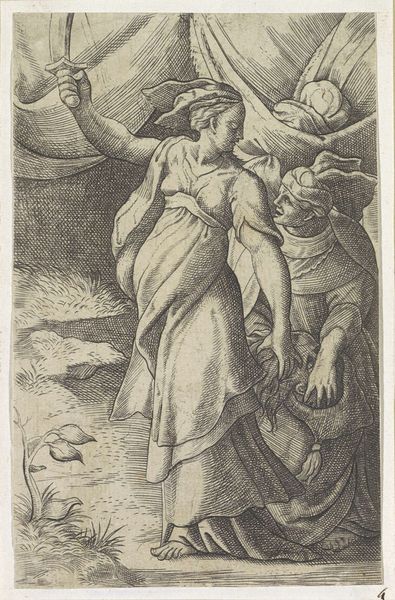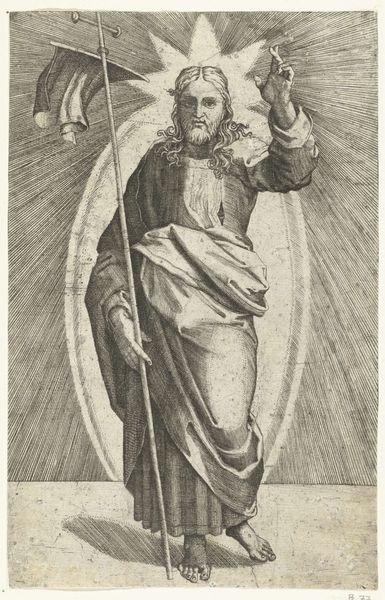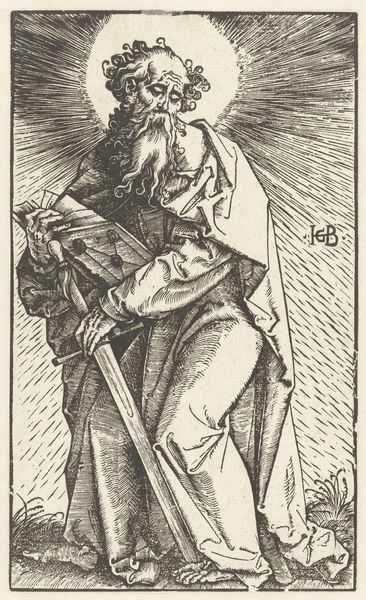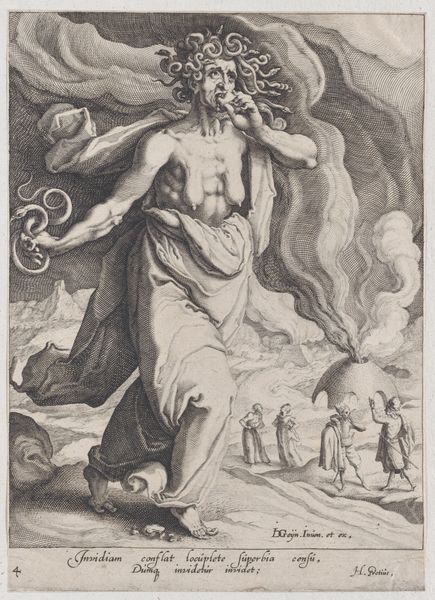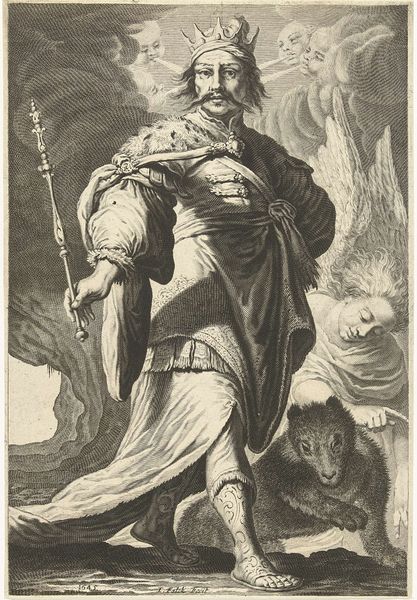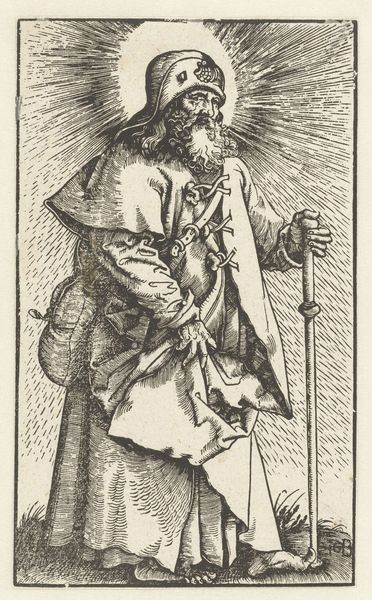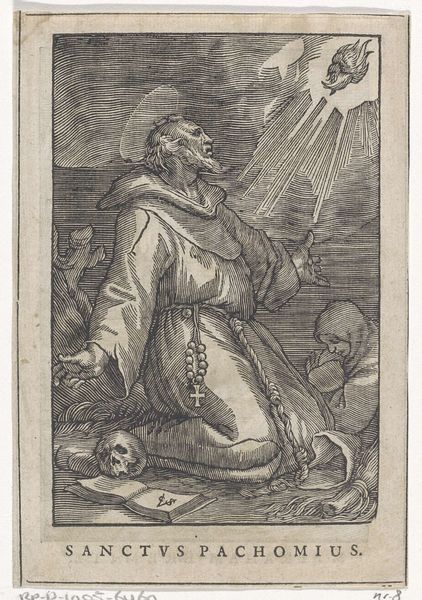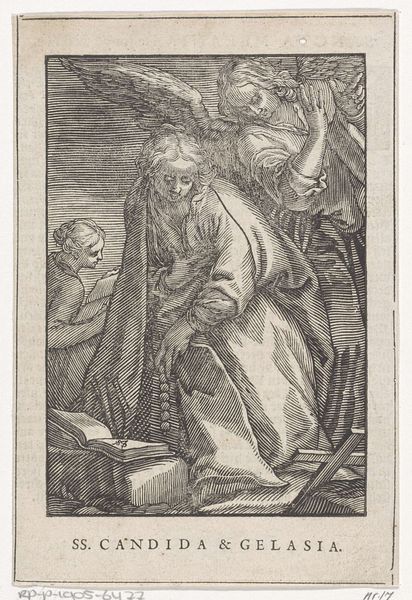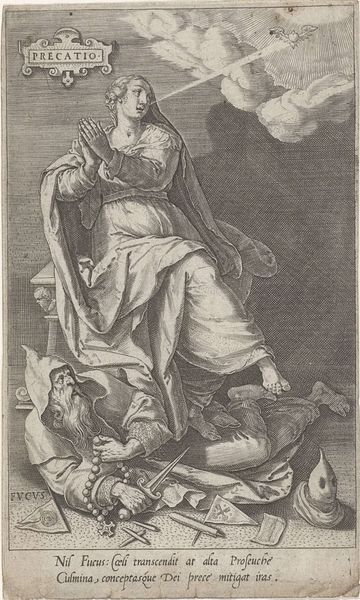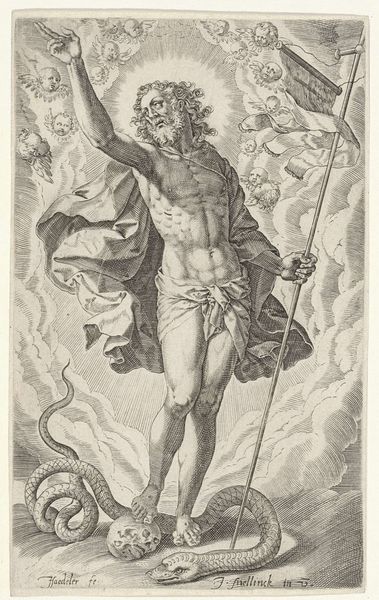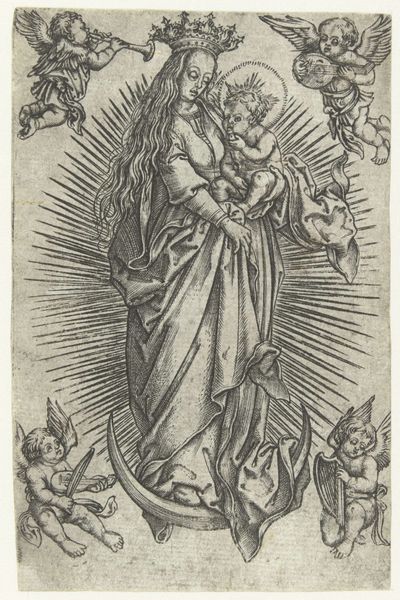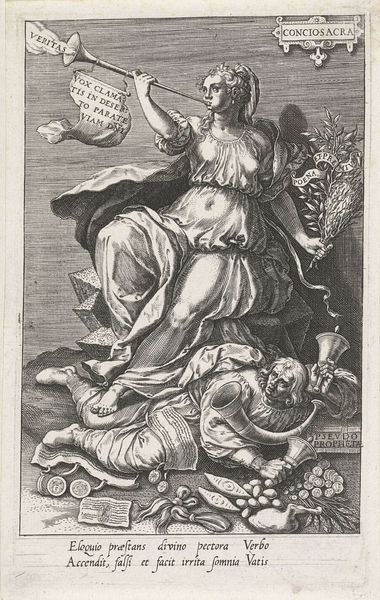
print, engraving
# print
#
figuration
#
history-painting
#
italian-renaissance
#
engraving
Dimensions: height 62 mm, width 44 mm
Copyright: Rijks Museum: Open Domain
Curator: Here we have "Christus als Salvator Mundi" created around 1520 by Sebald Beham, currently residing here at the Rijksmuseum. Editor: Whoa, that's intense. All those radiating lines – like Christ is bursting right out of the paper. The lines on his drapery and body must have been grueling work. Curator: The detail is certainly remarkable. Beham was a master engraver, part of a group of German artists known as the Little Masters because of the small scale and intense refinement of their prints. This piece is tiny! Editor: Small but powerful! Look at that globe. You see a cross topping it. This piece is a prime example of how religious iconography gets tied up with imperial power and global trade. Consider the engraving process itself - the copper had to come from somewhere and then all the distribution networks for these prints themselves… it really brings you back to the earth and all the dirty means of cultural production. Curator: Indeed! The “Salvator Mundi” is often portrayed holding this orb of earthly power, the representation becoming intertwined with status. The small format of prints allowed ideas and imagery to circulate in ways previously impossible. For what would have been the cost of, say, a painting of Christ, it’s plausible dozens of these would be circulating. Editor: Right. Think about the labor involved in creating all of these things and selling them to merchants in these cities – art was certainly never removed from labor! Curator: But beyond the socioeconomic implications, I wonder, what kind of connection to the divine did people find through images like this? Editor: Perhaps, like today, they gave the public new eyes to envision faith through something not unlike labor or global networks, something close to the self in every object they encounter. This lens in turn shapes culture and allows people to build stronger relations to power. Curator: I am captivated to think that we can perceive how deeply our present encounters mirror times long gone through this very work of art. Editor: Exactly, with works of the past one understands so much more clearly all the world is based in concrete circumstances we still grapple with today.
Comments
No comments
Be the first to comment and join the conversation on the ultimate creative platform.
